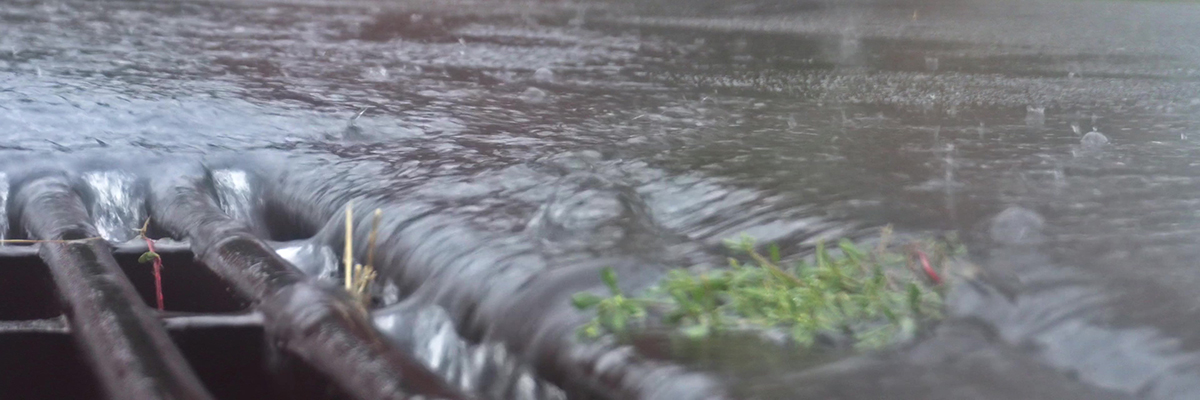
Storm Water Compliance & Permits
The National Pollution Discharge Elimination System (NPDES) Storm Water Program, mandated through the Clean Water Act, addresses non-agricultural sources of storm water discharge that negatively impact surface water quality. Specifically in Illinois, the Illinois Environmental Protection Agency (IEPA) requires a General NPDES Permit for Storm Water Discharges from Industrial Activities. Under this permit, quarterly storm water monitoring and electronic submission of a Storm Water Pollution Prevention Plan (SWPPP) for public posting are required.
Facilities have 180 days from the issue date to update their SWPPP and comply with the new requirements. New quarterly and annual monitoring requirements apply to many facilities. Additional resources can be found on EPA.gov.
If you have any questions regarding storm water issues, please contact us! We offer a full range of expertise and permitting services to address your firm’s storm water compliance needs.
Storm Water Reporting Requirements
Quarterly Storm Water Monitoring
If your industrial facility is covered by the General NPDES Storm Water Permit, you’re required to develop a storm water monitoring strategy so that you can collect and analyze the storm water samples as required by the permit. As the method and timing of the sample collection can be difficult (e.g., the sampling must occur after a rain event of a specific magnitude, etc.) We can assist you in developing and implementing a common-sense, cost-efficient strategy. We can also analyze the samples and prepare the necessary paperwork to complete your required quarterly storm water sampling program.
Storm Water Annual Inspection Report
As part of a facility’s General NPDES Storm Water Permit and in conjunction with its required SWPPP, an annual inspection must be completed, along with the requisite report documenting compliance with the site’s SWPPP and NPDES Permit. Elements in the Annual Inspection Report include changes in industrial activity at the facility that would impact its SWPPP and a statement regarding any spills that occurred during the reporting time period. Also, analytical results and the results of the quarterly visual inspections are required to be submitted with the Annual Inspection Report.
Storm Water Pollution Prevention Plans (SWPPP)
Facilities that are covered by an NPDES Storm Water Permit are also required to have a Storm Water Pollution Prevention Plan (SWPPP). If your facility has not yet developed a plan or the SWPPP needs to be updated to conform to the new permit requirements and current plant conditions, we can help prepare this for you.
Storm Water Permits
Notice of Intent (NOI) for General NPDES Permit
As part of the initial effort for a facility to undertake the NPDES permitting process, we have the expertise and experience to properly review your facility and its discharges to determine if and what storm water exposure your operation may have from onsite industrial activity.
Once this comprehensive assessment is complete, we discuss our findings with our client and then prepare the applicable forms for signature and submittal. The need to complete a NOI for the General NPDES Permit is required for most manufacturers that are found to negatively impact storm water discharge occurring from their facility. Exceptions to this requirement could apply to manufacturing facilities that have storm water discharging to combined sewers and a few other, very narrow exemptions.
No Exposure Certification (NEC) for NPDES Storm Water Permit
If we are able to document that a facility does not create an exposure to storm water discharge from its onsite industrial activity, we can then complete the necessary documentation to receive a No Exposure Certification, thus negating the need for the facility to maintain an ongoing General NPDES permit. With the No Exposure Certification, the facility is no longer required to complete annual sampling and reporting or develop pollution prevention plans.
Industrial facilities that are exempt from storm water permitting because they don’t have any storm water exposure to industrial activity, should resubmit the No Exposure Certification (NEC) every five years. The EPA reports that many regulated facilities have never submitted an NEC. If your facility never submitted a NEC or a Storm Water Notice of Intent (NOI) for coverage under the General Permit, it may be beneficial to once again review your need for compliance.
■ ■ ■
Accreditations:





